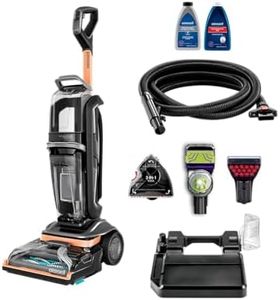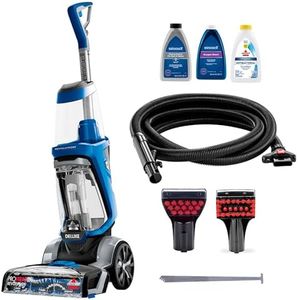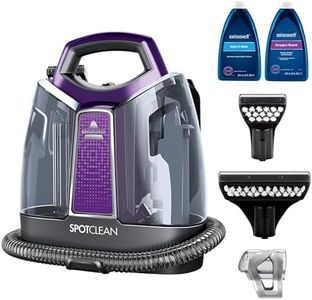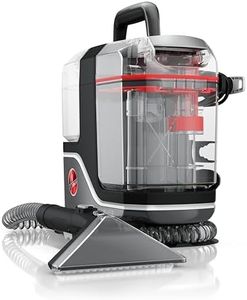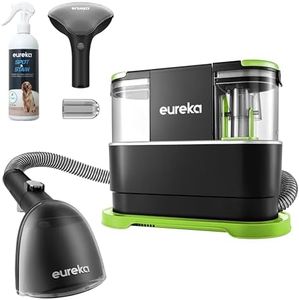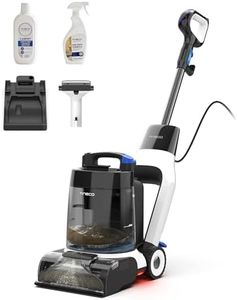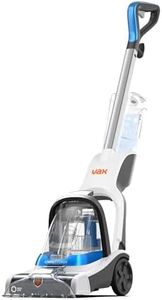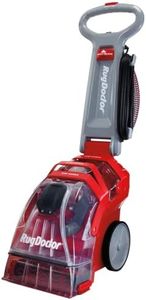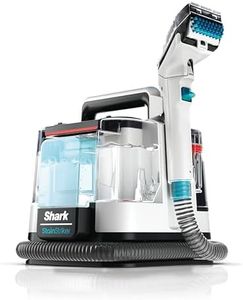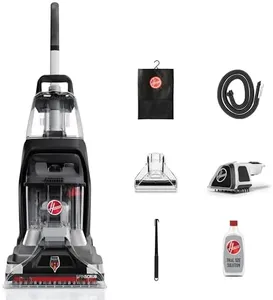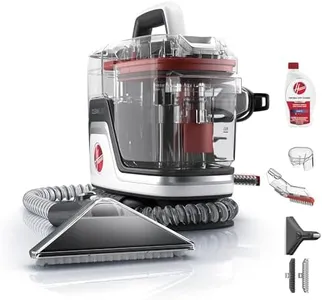We Use CookiesWe use cookies to enhance the security, performance,
functionality and for analytical and promotional activities. By continuing to browse this site you
are agreeing to our privacy policy
10 Best Carpet Cleaner Machines
From leading brands and best sellers available on the web.Buying Guide for the Best Carpet Cleaner Machines
When shopping for a carpet cleaner machine, it’s important to understand your needs in terms of home size, types of carpets, frequency of cleaning, and ease of use. The most suitable machine will be easy to operate, effective on your carpet type, and capable of handling the size and level of mess you regularly face. By learning what each key feature means and how it fits your lifestyle, you set yourself up for a purchase you’ll be happy with for years.Cleaning Path WidthThe cleaning path width is the width of the area the machine can clean in a single pass, usually measured in inches. A wider cleaning path means you can cover more area with each movement, making it faster to clean larger rooms. Machines with narrower paths are often more compact and easier to maneuver in small spaces or around furniture. If you’re cleaning big open spaces, a wide cleaning path is handy. For smaller rooms or apartments, or if you have lots of obstacles, a narrower width may be easier to handle.
Water Tank CapacityWater tank capacity refers to how much clean (and sometimes dirty) water the machine can hold at one time. Larger tanks let you clean more space before stopping to refill or empty, which is convenient for bigger areas. Smaller tanks mean a lighter machine that’s easier to move and store but requires more trips to the sink. Choose a large tank if you have extensive carpeted areas or want to finish cleaning quickly. Opt for a smaller tank if weight and storage space are important—such as if you only have a few rugs or are prone to lifting restrictions.
Weight and PortabilityWeight and portability describe how heavy the machine is and how easily you can move it around your home. Heavier machines may offer more cleaning power, but they’re harder to push and carry, especially if you need to take them upstairs or move them frequently. Lightweight models are easier for most people to use and store. If you have mobility challenges or need to clean on multiple floors, a lighter machine is more practical. For single-floor, heavy-duty jobs, a heavier machine might be worth it.
Cleaning Brushes and ToolsBrushes and extra tools refer to the systems and attachments the machine uses to agitate dirt and reach tricky spots. Rotating brushes dig deeper into carpets, while fixed or gentle brushes are better for delicate rugs. Some machines come with specialized tools for stairs, upholstery, or pet messes. If you have pets, stairs, or lots of furniture, look for a machine with multiple attachments. If you mainly want to clean open carpets, a basic brush system will do.
Cleaning Solution DeliveryThis is how the machine applies detergent or cleaning solution to your carpet. Some systems mix solution automatically, others require you to pre-mix. Some let you switch between water and cleaning formula with a button. Automatic mixing is more convenient, especially if you clean often, while manual options give you more control. Think about whether you want easy, push-button cleaning or if you prefer customizing the formula strength for different jobs.
Drying FeaturesDrying features help remove moisture from the carpet after cleaning, such as powerful suction or a built-in heater. Machines with strong drying abilities leave carpets less wet, which speeds up how soon you can use the room again and helps prevent mildew. If you need to use rooms soon after cleaning or live in a humid area where drying can be slow, prioritize machines with better drying options. For occasional use or in very dry climates, this feature may be less critical.
Noise LevelNoise level refers to how loud the machine is during operation. Quieter machines are more pleasant to use, especially in apartments or if you clean while others are at home. Louder machines may not be an issue if you can clean at your convenience or if performance is your top priority. Consider when and where you’ll most often clean—if quiet is important, check for noise ratings or user feedback about their sound.

